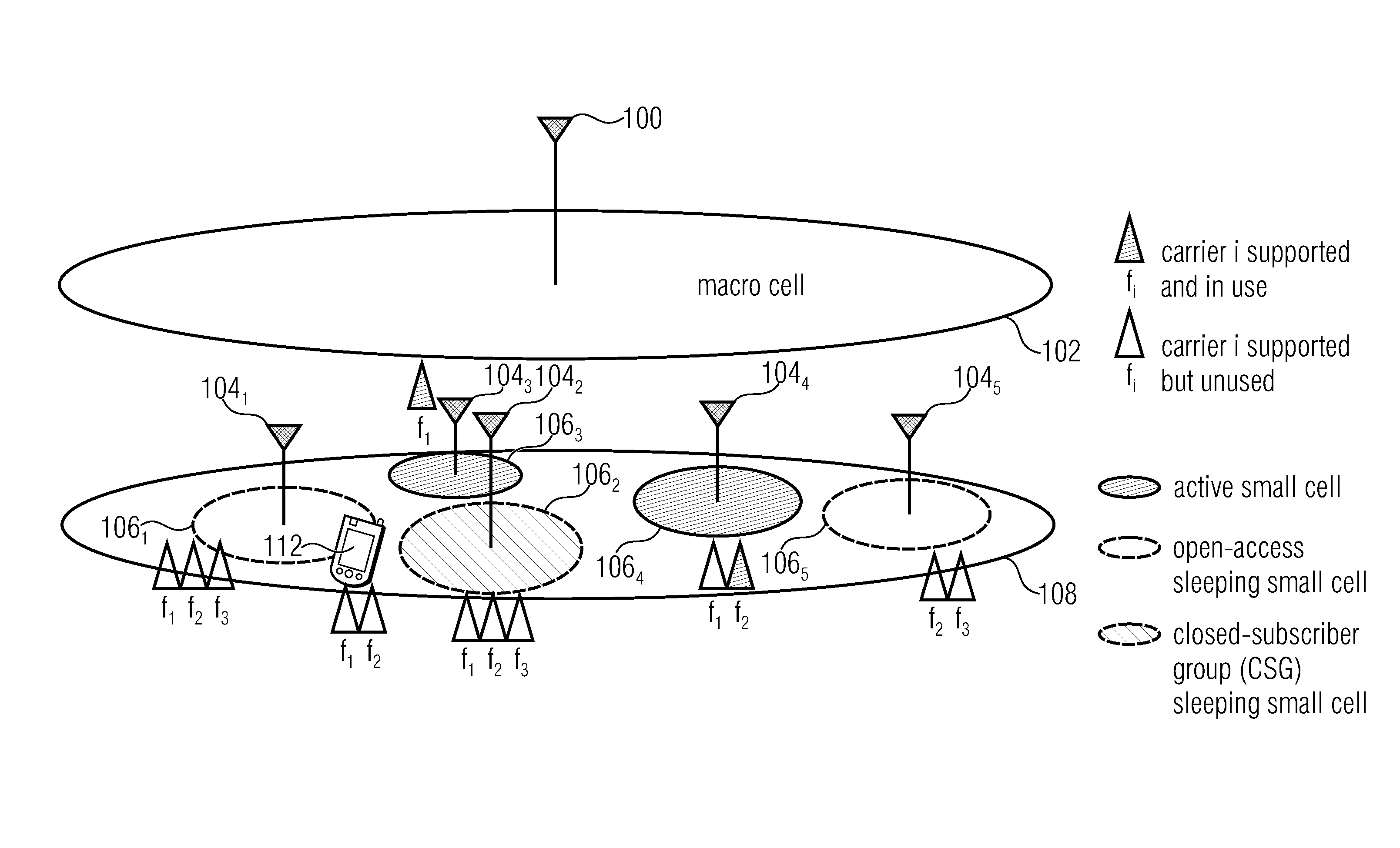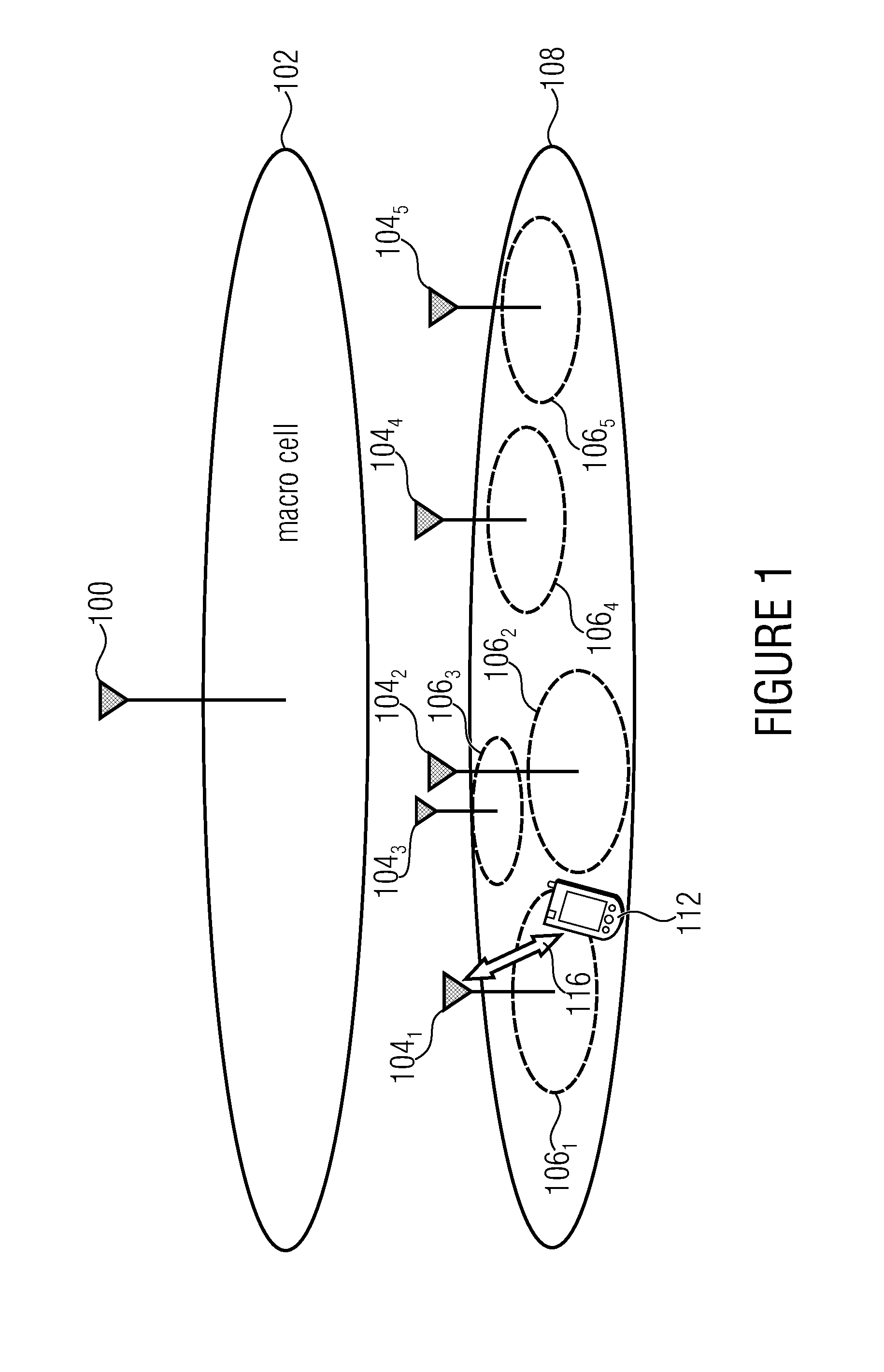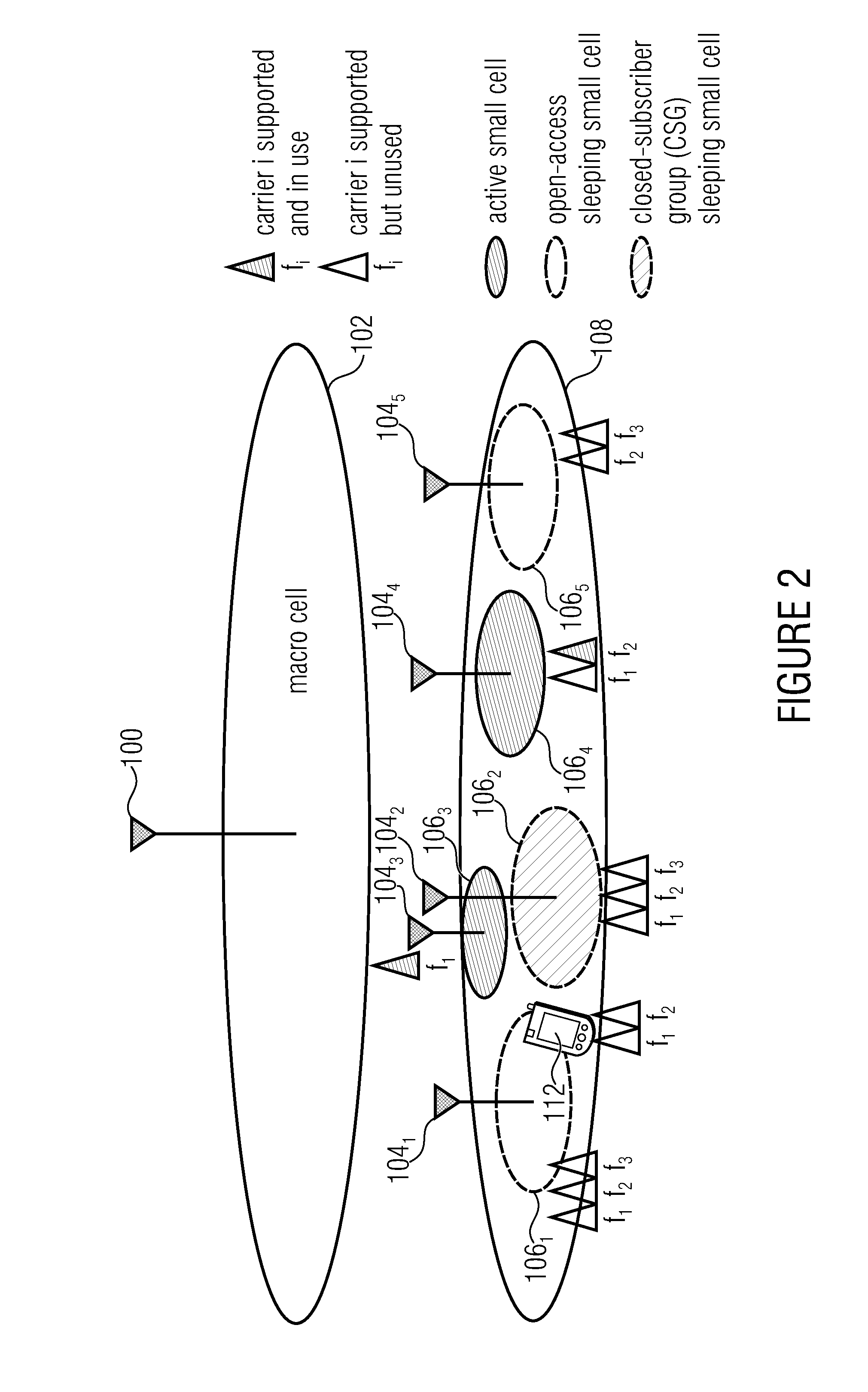However, this also results in some problems.
One problem is the small
cell discovery.
In the absence of discovery signals, it becomes impossible for UEs to discover sleeping cells.
Even though a reduced periodic transmission of discovery signals from a sleeping
cell may improve discovery, the reliability of this process is low and necessitates a lot of energy on the part of both the small cell and the UE in order to improve discovery speed and reliability.
Another problem with sleeping cells is what resources to activate at a sleeping small cell.
The default approach of activating all resources and capabilities is suboptimal, since it can lead, at best, to an underutilization of the activated resources.
Activating all resources may further result in a deterioration of the communication environment with regard to existing active communication links.
In the situation depicted in FIG. 2, the already active small cell 1063 operates in the
frequency band f1, so that activating all frequency bands in the sleeping cells 1061 and 1062, including
frequency band f1, may lead to an undesired interference situation deteriorating the communication environment.
Yet another problem with regard to sleeping small cells is the connection setup time, e.g., how to facilitate a quick and reliable connection setup.
The process of activating a sleeping small cell, its discovery and the acquisition of the proper
system information to connect to an activated small cell may result in a long connection setup
delay experienced by the UE 112 when trying to connect to a small cell that has just been activated from its
sleep mode so that no quick connection setup is possible.
Activating more small cells than needed in order to select the best candidate may increase the
energy consumption of the system unnecessarily.
Furthermore, this approach puts a lot of strain on the UE
energy resources as the UEs need to transmit its signals frequently and on several frequency resources in order to guarantee that all small cells resources remain discoverable within a reasonable amount of time.
Any attempt to optimize UE energy consumption for transmission of wake-up signal (e.g., by reducing the transmission intervals or the number of frequencies) directly affects the potential discovery latency.
Above all, existing uplink-based signaling approaches do not provide any mechanisms to facilitate selective wake-up of cells based on UE and small cell capabilities as well as attributes.
However, with existing approaches, sleeping cells 1061 and 1062 will be activated, which leads to unnecessitated energy consumption and potential sub-par connection to a small cell with less desirable properties.
However, like the previous approach, at the same time it suffers from the same drawbacks.
In addition in a dense small cell deployment, the transmission of unique discovery signals from all small cell base stations, including those being in the sleep mode, significantly increases the search space for the UE which can then lead to discovery delays.
However, proper functioning of these schemes necessitates a
training phase to obtain accurate reference data, which can cause disruptions to the service provided.
Very little attention is paid to the fact that a sleeping small cell and a UE may have many resources and capabilities which necessitate more complex decisions to be made regarding the resource and the capabilities to activate in a sleeping small cell for a communication with a target UE.
However, putting small cells to sleep leads to the above described discovery problems for the user equipment (UE).
This could lead, at best, to delayed discovery and connection to a suitable small cell or, at worst, to suboptimal connections to other cells.
Putting a BS to sleep limits its ability to provide data
connectivity to UEs.
 Login to View More
Login to View More  Login to View More
Login to View More 


